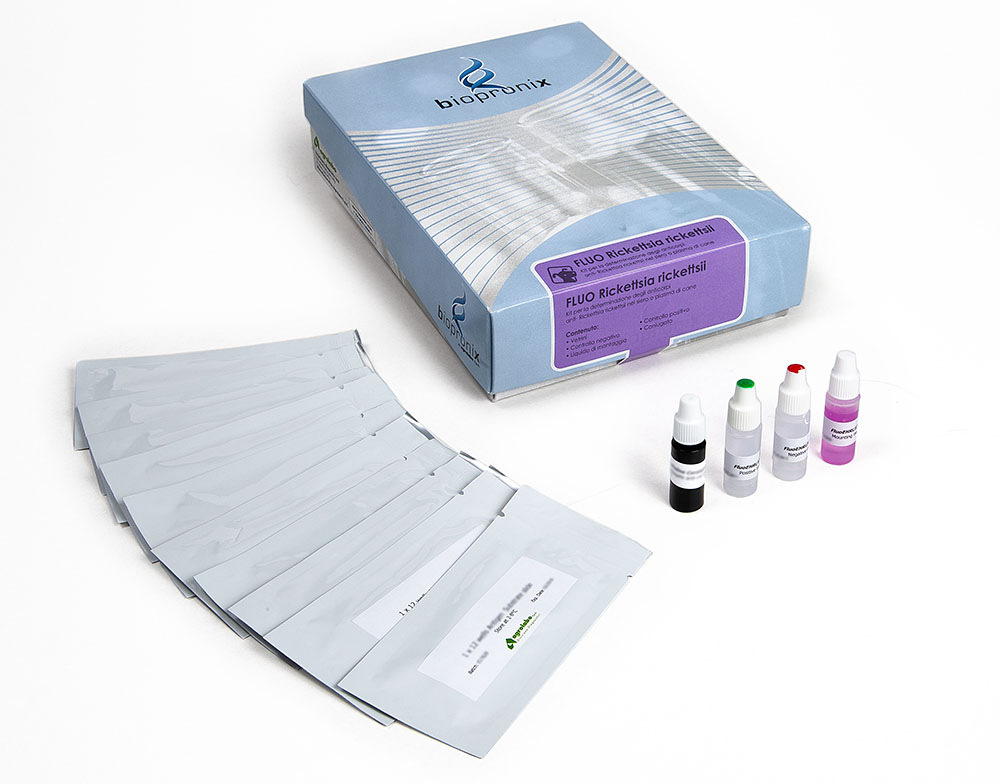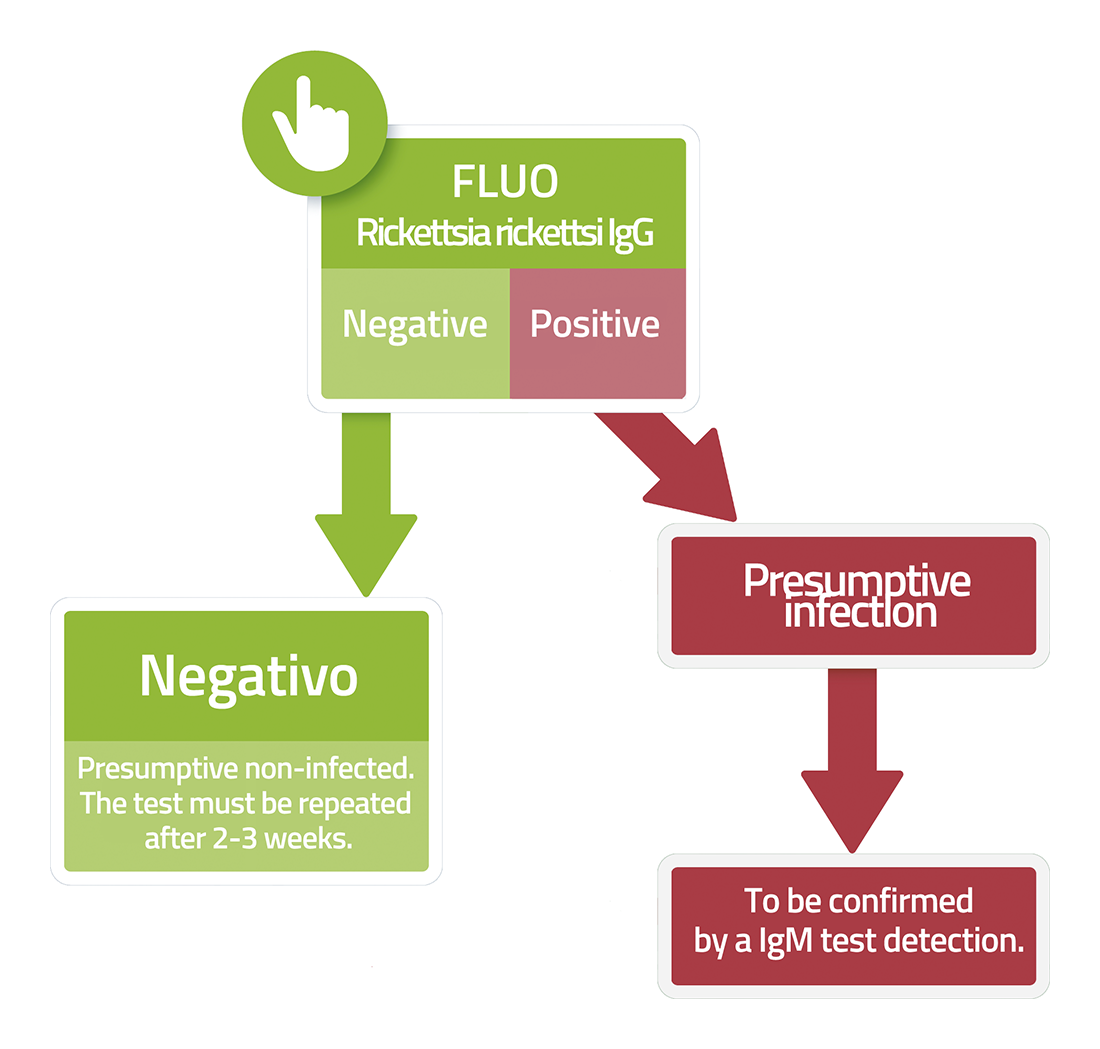FLUO RICKETTSIA rickettsii
IFA kit for the detection of anti-Rickettsia rickettsii IgG antibodies
Fluo RICKETTSIA rickettsii is an immunofluorescence-based assay for the detection of anti-Rickettsia rickettsii IgG antibodies in dog serum or plasma samples.
Rickettsial diseases are zoonotic infectious diseases sustained by microorganisms belonging to the Rickettsiaceae family. Rocky Mountain Button Fever (RMSF) is caused by the obligate intracellular parasite Rickettsia rickettsii.
The infection is transmitted to the dog through the bite of an infected tick; rickettsiae, penetrated inside the skin, are spread through the circulatory and lymphatic system in every organic district, preferably localizing in the endothelial cells of the venules and arterioles of numerous organs (skin, brain, lung, kidney, heart, liver, spleen , pancreas and gastrointestinal tract) where replication occurs. This is followed by vasculitis and vasoconstriction and increased vascular permeability. Hemorrhage, thrombocytopenia and hypotension are observed.
In the canine population living in endemic areas, antibodies may be titrated as a result of subclinical infections or exposure to non-pathogenic rickettsiae present in ticks.
Immunogenic contact with R. rickettsii produces a protective response to reinfection in experimental dogs for at least 3 years.
Pure breed dogs appear to be more prone to developing the condition than mestizos, and the German Shepherd has a particularly high prevalence.
The disease is quite rare and is widespread mainly in US.
Fever sets in 2-3 days after contact with the tick. The incubation period varies from 2 to 14 days.
Early skin lesions in some dogs consist of edema and lip hyperemia, of the penile sheath, scrotum, auricle and other extremities. Clearly delimited vesicles and erythematous macules were observed on the buccal mucosa. Male dogs develop scrotal edema or swelling of the epididymis, which is why they have a stiff gait and are reluctant to walk, also due to inflammation of the joints, muscles and meninges.
Epistaxis, melaena and haematuria may be found in animals with severe disease. Neurological signs of generalized cerebral and spinal involvement were observed. Infected dogs may experience a rapid and complete recovery if the disease is mild or if antibiotic therapy is started early. On the other hand, in the case of untreated acute disease, death can result from cardio-vascular, neurological and renal damage.

